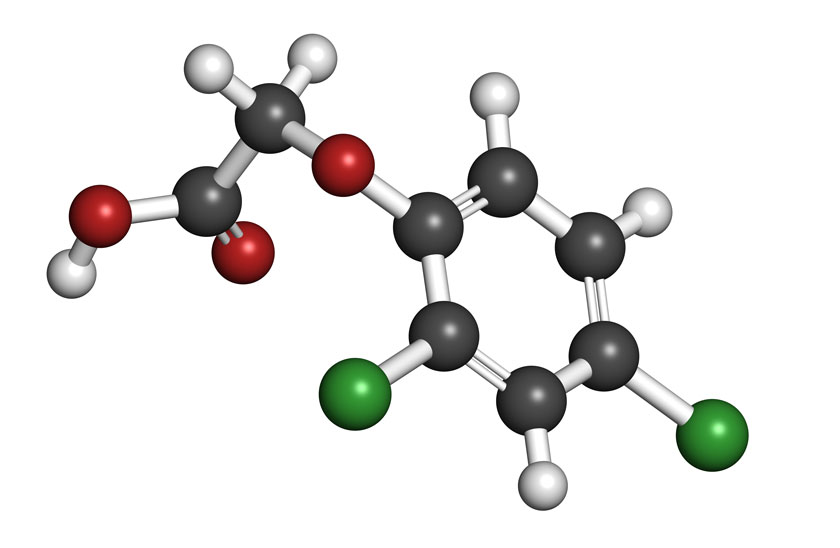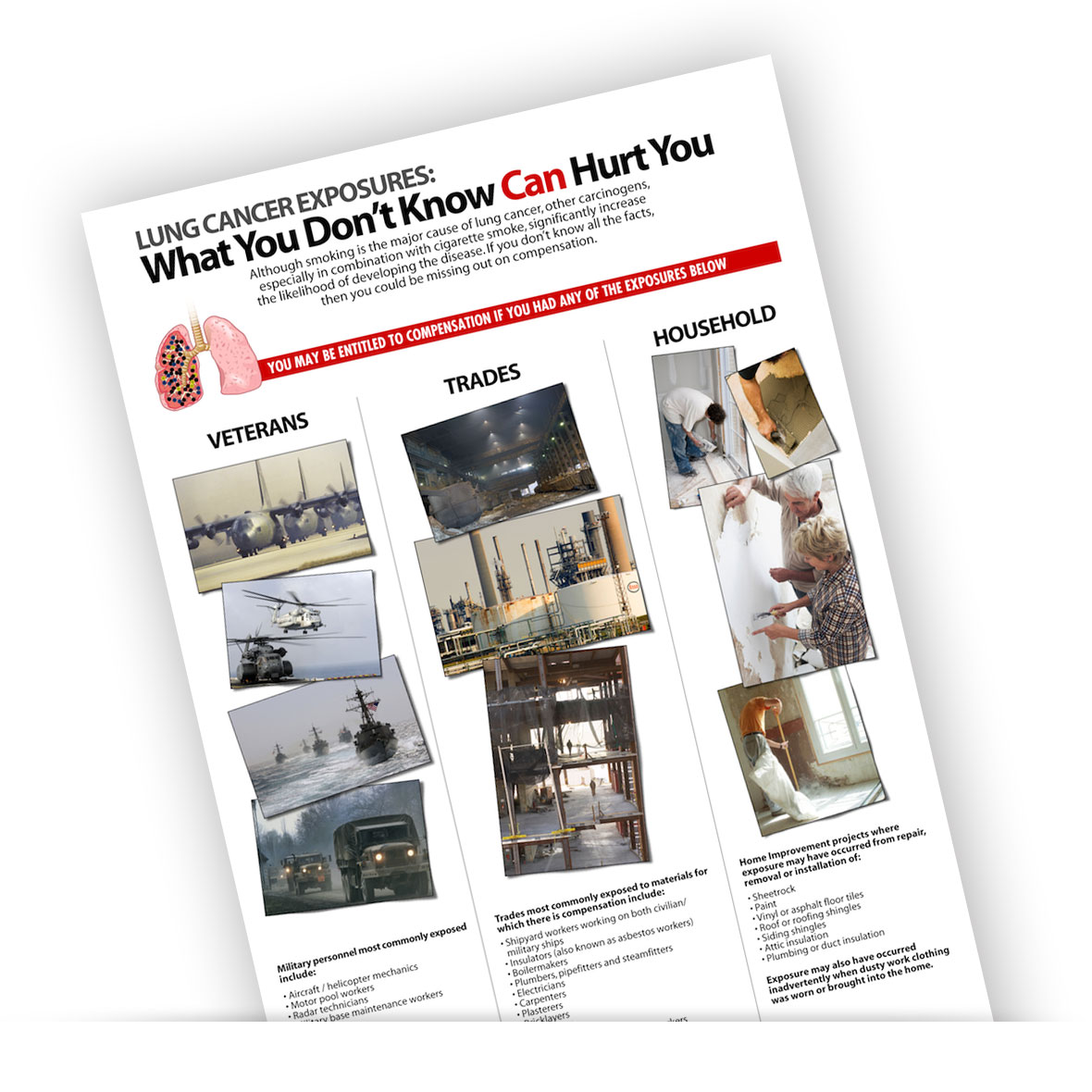Lung Cancer Answers is a website devoted to life issues for lung cancer patients and their families and is sponsored by Brad Cooper* of Cooper, Hart, Leggiero & Whitehead, PLLC. Cooper, Hart, Leggiero & Whitehead is located in The Woodlands, Texas (Greater Houston Area), handles cases nationwide with co-counsel in state of filing, and can be reached toll-free at 1-800-998-9729 for more information on lung cancer. Brad Cooper is not a medical doctor. The information on these pages is for the education of lung cancer patients and their families regarding potential medical and legal options. Patients are advised to consult with a medical doctor.
* Licensed by the Supreme Courts of Texas.
Agent Orange – Causes of Lung Cancer
There are several factors that can increase a person’s risk of developing lung cancer.
One lung cancer risk factor is exposure to pesticides, particularly a mixture called Agent Orange.
Named for the color of its metal containers, Agent Orange was an herbicide produced for military purposes during the Vietnam War. From 1961 until 1971, approximately 19 million gallons of the product were applied to shrubbery and other foliage through the use of vehicles, aircraft, or by hand— all with the intent to strip the Viet Cong jungle of cover and food.

2,4-D (2,4-dichlorophenoxyacetic acid)
Agent Orange ingredient
Early on, there were concerns about the use of Agent Orange since it contains TCDD, a type of dioxin that is related to toxic chemicals such as PCBs (Polychlorinated Biphenyls) and dibenzofurans. TCDD in particular has shown to cause fatal diseases in lab tests with animals; therefore, it has caused concern in regard to human effects.
The Link Between Agent Orange And Lung Cancer
The U.S. Department of Veterans Affairs in conjunction with other governmental agencies has carried out studies in regards to Agent Orange exposure and its effects on veterans. The agency acknowledges the fact that there is a correlation between Agent Orange and lung cancer, as well as other respiratory cancers and diseases.
In particular, a report published by The National Academy of Sciences, Engineering, and Medicine (NASEM) in 1993 (updated in 2018) titled, Veterans and Agent Orange Exposure, suggests a correlation between exposure to Agent Orange and lung cancer. The NASEM also disclosed that the relationship between dioxin and respiratory cancer development was evident only in cases where exposure to the chemicals was in high concentrations and for extended periods of time.
According to The American Cancer Society, research conducted in regards to Vietnam veterans and the development of respiratory cancers has not resulted in data that shows an increase in the amount of veteran respiratory cancer cases. There are, however, other respected organizations that have classified dioxin as “known to be a human carcinogen.”
Additionally, studies of industrial accidents in California and Germany showed an increase in respiratory cancer incidence. Collectively the research data shows a low probability of an increase in lung cancer diagnosis except in cases where dioxin exposure is involved.
Other Diseases And Agent Orange
The Department of Veteran’s Affairs acknowledges that there are a number of various Agent Orange-related conditions aside from lung cancer. Some of these diseases include the following:
- Other respiratory cancers, including lung cancer
- Acute and subacute peripheral neuropathy
- Chloracne
- Chronic lymphocytic leukemia
- Diabetes mellitus (type II)
- Hodgkin’s disease
- Multiple myeloma
- Non-Hodgkin’s lymphoma
- Parkinson’s disease
- Porphyria cutanea tarda
- Prostate cancer
- Soft-tissue sarcoma
Note: A disease must be at least 10% disabling to the veteran to receive compensation by law.

Where Were You Exposed to Carcinogens?
Regulation And Court Decisions
The home use of Agent Orange was regulated in 1971 by the U.S. Surgeon General due to its hazardous effects. All applications of the chemical were halted in Vietnam.
In 1991, the Agent Orange Act of 1991 was signed into law to help resolve issues regarding Vietnam veterans and exposure to Agent Orange. The three primary factors of the bill, H.R. 556, include the following:
- To provide a scientific basis for deciding whether or not to continue further research regarding the effects of herbicide exposure.
- To establish procedures for determining whether or not certain diseases are associated with Agent Orange exposure. The NASEM would be used to research evidence in regards to possible health effects from Agent Orange used in Vietnam.
- To systematize all previous decisions made relative to herbicides and assumptions made in regard to Vietnam service and exposure.
In 2004, Judge Jack Weinstein ruled that companies that manufactured Agent Orange would be exempt from legal liability, through the Military Contractors Doctrine, due to their roles as government contractors and the fact that they followed military guidelines. In 2005, an appeal was filed on behalf of Vietnam veterans. In 2008, the U.S. Court of Appeals for the Second Circuit in New York affirmed the original protection by The Military Contractors Doctrine. Since that ruling, veterans and their families cannot sue companies that manufactured Agent Orange used in the Vietnam War. In 2009, the U.S. Supreme Court refused to review the ruling of the 2008 decision.
Help For Veterans Who Were Exposed To Agent Orange
Were you exposed to Agent Orange? Do you have lung cancer? You may be eligible for compensation. Call us at 1-800-998-9729 today, or you can complete the form below and someone from our office will contact you.

©2025 Cooper, Hart, Leggiero & Whitehead, PLLC. All rights reserved.